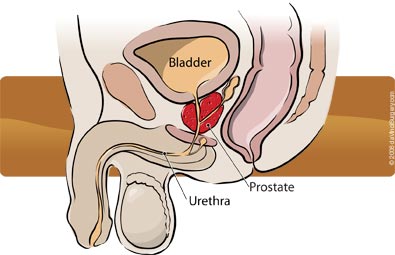Prostatectomy
The gold standard treatment option for men under 70 with early-stage, organ-confined cancer is surgical removal of the prostate using nerve-sparing radical prostatectomy. Prostatectomy is also the most widely used treatment for prostate cancer today in the US.1
The primary goal of prostatectomy is removal of the cancer. A secondary goal is to preserve urinary function and -- when applicable -- erectile function. Preservation of the nerves necessary for erections can be an extremely important goal for patients. These nerves run alongside the prostate and are often damaged when removing the prostate. A nerve-sparing prostatectomy attempts to preserve these nerves so that the patient may be able to return to his prior erectile function.

Types of Prostatectomy
Approaches to this procedure include traditional open surgery, conventional laparoscopic surgery or da Vinci Prostatectomy, which is a robot-assisted laparoscopic surgery.
With a traditional open procedure, your surgeon uses an 8-10 inch incision to access the prostate. This approach often results in substantial blood loss, a lengthy, uncomfortable recovery and a risk of impotence and incontinence.
Conventional laparoscopy uses a specialized surgical camera and rigid instruments to access and remove the prostate using a series of small incisions. This approach provides your surgeon with better visualization than an open approach. In addition, it provides patients the benefits of a minimally invasive procedure.
Despite these advantages, conventional laparoscopy relies on rigid instruments and standard 2D video, technical limitations that can be challenging for the surgeon. Because of these drawbacks, conventional laparoscopy doesn't lend itself well to complex procedures like prostatectomy. Therefore, very few urologists use this approach for prostatectomy. Moreover, neither laparoscopy nor open surgery can provide adequate visualization for a very precise, nerve-sparing prostatectomy.
- The National Prostate Cancer Coalition: www.fightprostatecancer.org home > treatment & research > treatment options > surgery
